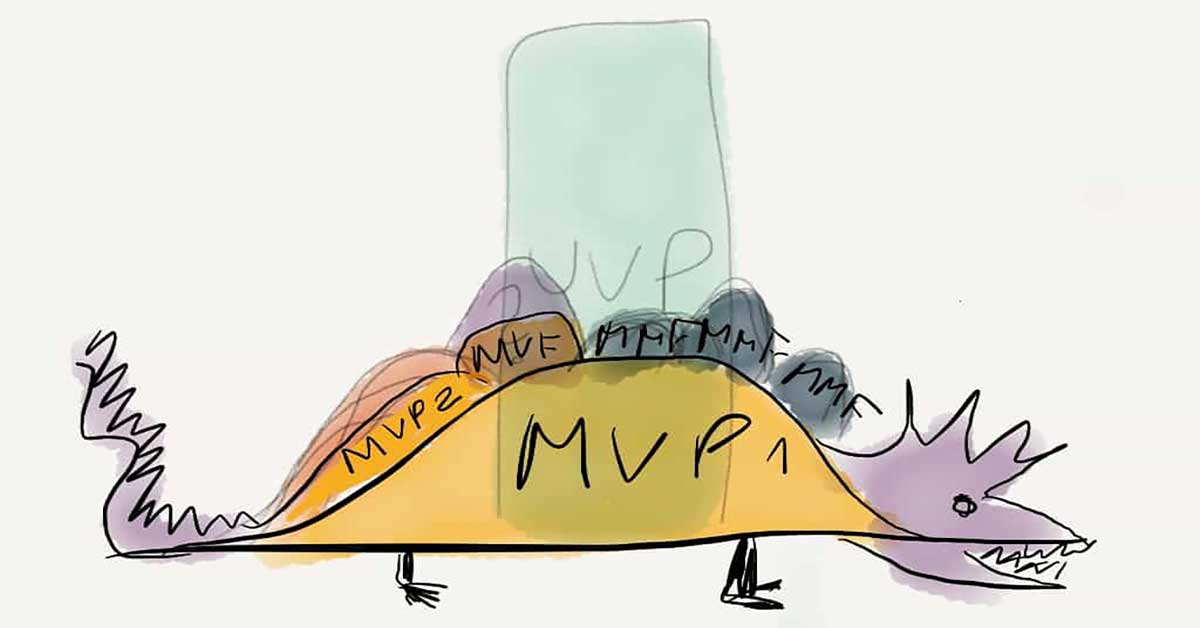
The horrible truth about software development estimation, and what to do about it
In recent years I’ve been working with many software development teams and almost all of them struggle with estimating the work. The energy spent on
Home » Product Ownership

In recent years I’ve been working with many software development teams and almost all of them struggle with estimating the work. The energy spent on

What does Scrum Product Ownership have to do with dinosaurs? Watch to our video below as Yuval Yet, PST gives insightful information about unique value propositions, minimally marketable features, and so much more!

What does Scrum Product Ownership have to do with Dinosaurs?
We typically say that Scrum Masters get to herd cats. But Scrum Product Owners actually need to learn how to ride a Dinosaur! With the click-bate established, what does that even mean?

Marketing Backlogs in the Trenches
Last week I facilitated a 2-day Agile Marketing workshop for one of my clients. As usual, the discussion about the Marketing Backlog and how to move from a big-bang marketing campaign to a more iterative approach via smaller slices of stories was one of the highlights.
As usual, I introduce the concept of User Stories which are the most popular way to represent Product Backlog Items (PBIs) in the Agile world and are also very popular in the Agile Marketing space. We looked at some awful examples of stories, such as “As a marketer, I want to install Drift on my site” or “As a user, I want to see a webinar” and then moved to stories that provide more insights about a real user (e.g. “As a VP Marketing focused on Demand Generation”) and their intent (e.g. “so that I could get more demand generated from people who hate forms and lead magnet registration-walls”)
We then broke out into multiple teams each taking an actual campaign/project they’re planning for 2019 and creating the Marketing Backlog for it.

We’ve all heard it before – “Talented technology team builds amazing product!” That… doesn’t create the impact that they wanted, not enough customers end up buying or the users aren’t happy with it or
This is an especially common problem with companies that have a “brilliant” idea or technology that someone goes developing in their garage (if startup) / innovation product development group (if enterprise). This could be a new product or just a new feature of an existing product. Typically, the Product Owner or Product Manager in the organization specifies what to build. If they’re somewhat Agile, they even work closely with the organization to build it incrementally and hopefully deliver it continuously. But still, even then, too often the product or features don’t provide the expected impact/benefits. Overcoming this challenge is a common theme that is discussed by attendees at our SAFe POPM Course.

Comment: We’re reposting here a classic article from the archives of Yuval’s personal blog.
What do Agile backlog items have to do with Dinosaurs?
I’ve been using a visualization that people find useful for understanding the relationship between the various Lean/Agile requirement containers. Some people call the full model a dinosaur. Others are reminded of the snake who ate an elephant from “The Little Prince”. (I’m sure there is a good connection to elephant carpaccio somewhere in here …)

Sometimes you need to pack a suitcase.
One way of doing it would be to have a list of how many socks, shirts etc. can the suitcase hold, then prepare these items and pack them into the suitcase. This should work, I think, but there are a few problems. First, you need to have this list ready for each suitcase. Second, well, it would be difficult to prepare such a list due to the unstable nature of clothes: wrinkling, moving, and in general the tendency of not having a steady shape.
However, the main problem with this method is that it takes a lot of time. You need to constantly check the number of items against the list, write down how many you have etc.

We need good metaphors to better understand software development. Good metaphors from our day to day can help us better understand this elusive domain.
Some time ago I wrote about traffic and not long ago I wrote about handling scope the same way you would handle a growing garden. In this short article, I would like to discuss the great opportunity for a better understanding of software development, hidden in fruits. Yes, fruits.

A Quick Fun Way to Understand the Basic Concept of Iterative Incremental Development A fundamental aspect of Agility is incremental and iterative development. It’s so

A big problem with a garden is that it doesn’t stop growing. And so does the scope of a software development project.
A lot of effort is invested by gardeners in fighting the growing garden. They are constantly weeding, pruning, and trimming to control how the garden looks and to make sure it best serves its purpose.
How much are you investing in weeding your scope?
Request for additional information and prices